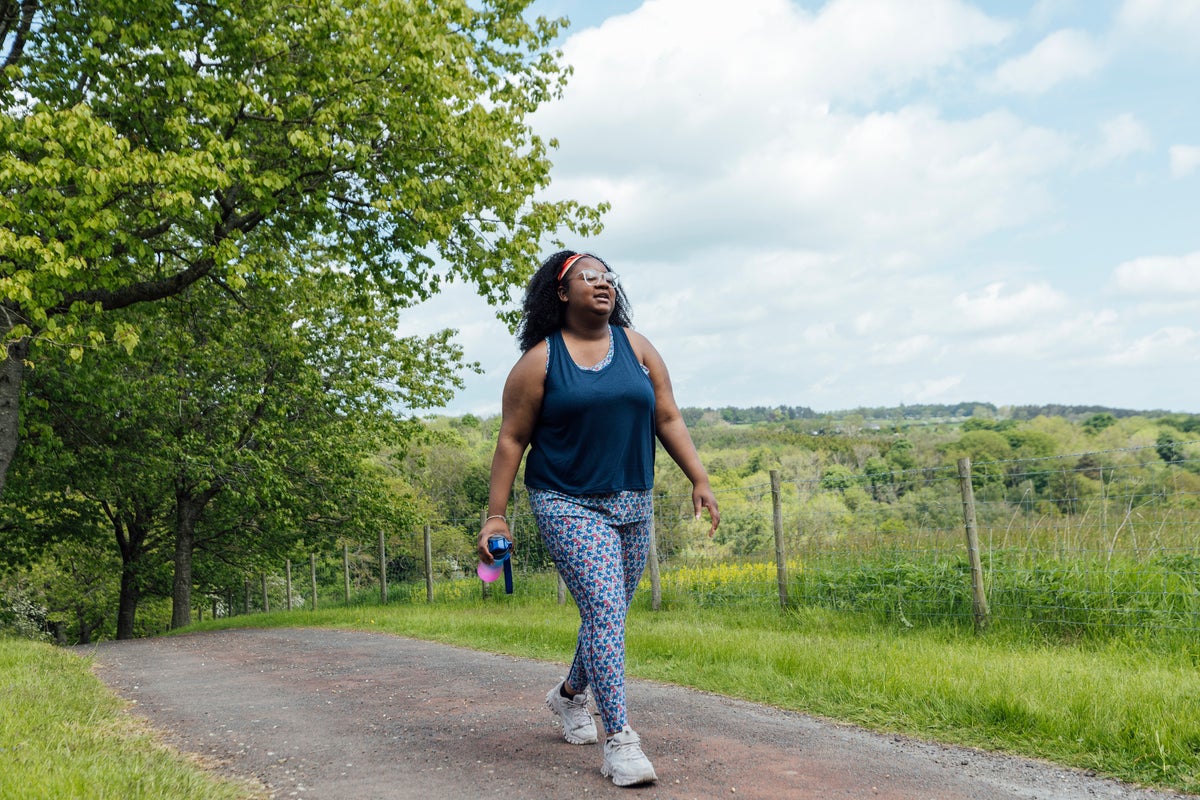Exercise is good for you. Even in today’s social media-led world of differing opinions, I think most people can agree on that. But experts are often hit with the same question – how much exercise should I be doing?
As with the answer to most fitness questions, it depends. It depends on what your goals are, where your starting point is and your wider situation. However, I still think it’s an important question for the average person to ask.
Why? Because most people are incredibly busy, and fitting your fitness efforts into an already rammed weekly routine can be tricky. Knowing a ball-park figure to aim for, and some tricks for achieving it, can bridge the gap between someone doing no exercise and someone doing some exercise. And as you’ll find out, this can make a significant difference to your health.
So, I spoke with a cohort of industry-leading experts to determine how much exercise the average person should be doing each day for optimal health.
How much exercise should you do each day?
If I could have you take one thing away from this feature, it would be that movement in any form is usually worthwhile. It doesn’t matter if you can’t commit to a full hour in the gym or hit 10,000 steps a day, “every move counts towards better health”, according to the latest World Health Organisation guidelines on physical activity.
Small amounts of movement can have an impressive impact, whether that’s swapping escalators for stairs where possible or squeezing in a five-minute bodyweight workout wherever you can.
I would also suggest establishing weekly targets, rather than daily ones, as this provides more margin for error amid the unpredictability of life, and can better reflect your consistent behaviours over time. Now, over to the experts.
“Most evidence shows that even doing very small amounts of exercise or physical activity is beneficial for health, but more is better for us,” says Dr Richard Blagrove, a senior lecturer in physiology at Loughborough University.
“For example, even burning 500 kcal per week shows reductions in risk of mortality compared to being completely inactive – according to a study in the British Journal of Sports Medicine.”
“The same is true for resistance training. Doing only one set of lifting heavy a couple of times per week, to repetition failure, shows benefits to maximum strength that confer benefits to functional performance. But again, doing more than one set is more beneficial in a dose-response way.”
Read more: 21 best men’s gym bags for carrying all your workout kit
Walking
A similar approach can be applied to walking, says Dr Elroy Aguiar, an assistant professor of exercise science in the University of Alabama’s department of kinesiology.
“The research suggests that the ideal combination for getting most benefits would be walking around 7,000 to 8,000 steps per day, in terms of volume, and part of that should include 20 to 30 minutes of walking at 100 to 130 steps per minute or faster,” he explains.
A study by the University of Granada concluded that, “if we focus on the risk of dying from cardiovascular disease, most of the benefits are seen at around 7,000 steps [per day]”, while 8,000 steps would “significantly reduce the risk of premature death”. It found that faster walking has similar benefits too.
“But the new WHO messaging also says that all movement counts to some degree,” Dr Aguiar adds. “Accumulating little bursts of activity throughout the day just to elevate your heart rate and your metabolic rate a little bit – like walking a bit faster or further to your car – still counts in terms of exercise.”
A large meta-analysis published in the European journal of preventive cardiology concluded that there was a significant link between higher step counts and a lower risk of both all-cause mortality (any reason someone might die) and cardiovascular mortality (death due to diseases of the heart and blood vessels).
These benefits could be seen from daily step totals as low as 3,867 for all-cause mortality and 2,337 for cardiovascular mortality – a far cry from 10,000. Better yet, increasing your daily step total by 1,000 “correlated with a significant reduction of all-cause mortality of 15 per cent, and similarly, a 500-step increment correlated with a reduced risk of CV mortality of seven per cent”.
In plain terms: a little movement can do a lot of good. However, as a blanket rule, Dr Aguiar points to the WHO guidelines, which have also been adopted by the NHS.

Physical activity guidelines
“Adults should aim to do strengthening activities that work all the major muscle groups (legs, hips, back, abdomen, chest, shoulders and arms) on at least two days a week,” the NHS website states.
“[They should] do at least 150 minutes of moderate-intensity activity a week, or 75 minutes of vigorous-intensity activity a week, spreading exercise evenly over four to five days a week, or every day.”
The NHS also recommends minimising the time you spend sitting or lying down, and breaking up lengthy sedentary periods with a spot of activity. On the whole, these figures are a good benchmark and worth keeping top of mind.
Strength training
One area I haven’t addressed from these guidelines is strength training. The WHO guidelines highlight that doing this twice per week can yield impressive results and we now know due to recent studies that strength training can be especially beneficial for bone and muscle strength in midlife, as hormones start to change.
“The evidence suggests that lifting weights regularly – a couple of times per week – improves body composition, glucose homeostasis [linked to risk of type 2 diabetes], muscle mass, cognitive function, metabolic processes and mobility,” says Dr Blagrove.
If you’re thinking of committing to a couple of strength training sessions per week, leading strength coach Dan John recommends full-body workouts for the best results. And these can be as short as 10 minutes for beginners.
“The body is one piece,” he says. “For example, walking is not just for your feet or ankles or legs or butt. Walking does marvels for the spinal column. Walking does marvels for the eyes and the vestibular system. It’s a whole-body movement.”
He recommends focussing on “movements, not muscles” and including an element of pushing, pulling, hinging (at the hips), squatting and carrying in each week of your training.
As case studies, he shares two of his favourite quick kettlebell workouts, which cover most bases; the humane burpee and the SparHawk.
Or, if you want more flexibility in your exercise plans, you can combine his three favourite kettlebell exercises – the kettlebell swing, goblet squat and Turkish get-up, or press-up if this last option is too tricky – in any way you want.
“[In a workout, I think doing] 75 swings, 15 goblet squats and 15 press-ups [or 10 Turkish get-ups] circles that near perfect volume load for a new person who’s in some kind of shape,” John says.

Cardiovascular exercise
“The only parameter of fitness that strength training tends not to change is cardiorespiratory function, which aerobic-based exercise is needed for,” says Dr Blagrove.
For those newer to fitness, walking will suffice here. But for anyone who has established a decent base level of cardiorespiratory fitness (the ability of the heart and lungs to deliver oxygen to the working muscles), slightly more intense activities like faster-paced running, swimming or cycling might be needed to see improvements in this area.
As for quantity, Dr Blagrove points to research published in the Journal of Strength and Conditioning Research. This suggests that “endurance performance can be maintained for up to 15 weeks when training frequency is reduced to as little as two sessions per week, or when exercise volume is reduced by a third to two-thirds (as low as 13-26 minutes per session), as long as exercise intensity (exercising heart rate) is maintained”.
In other words, a couple of short sessions each week should be enough to maintain many parameters of cardiorespiratory fitness for most people.
Summary
After speaking with experts at the top of their respective fields, there were clear takeaways. Fitness and longevity can seem like complex subjects and often, the sheer volume of data and advice can be off-putting for the average person. To avoid overcomplicating things, here are the key points you should be bearing in mind when it comes to your daily and weekly exercise.
- All movement counts towards better health – just because you don’t have time to walk 10,000 steps per day, run 10k or spend an hour in the gym, that doesn’t negate the impact of any and all activity you are able to do.
- Incidental movement also counts, whether that’s walking from your car to the office or tidying the house.
- Walking further is better, walking faster is better, and combining the two is best for your health.
- The above message applies to most types of exercise: more is usually better, as are higher intensities, but any amount can be beneficial.
- Walking 8,000 steps per day is optimal if you want to maximise your return on investment (in relation to all-cause mortality).
- Small increases in daily steps have been linked to improved health, with benefits starting at roughly 4,000 steps a day for all-cause mortality and 2,500 for cardiovascular mortality.
- Two short (as low as 10 minutes) full-body strength training workouts each week can be enough to trigger impressive results.
- Two short (13-26-minute) bouts of aerobic activity per week is likely enough to maintain or improve cardiorespiratory fitness in most people.
“My main message is for people to simply pick a sport, exercise or physical activity they enjoy and can consistently adhere to long-term,” Dr Blagrove says.
“There isn’t an exercise type or modality that is ‘best’, or a volume threshold that people should be trying to achieve, like 10,000 steps per day. But doing a small amount of something active most days long-term is better than trying to do excessive amounts short-term then quitting because it feels like a chore.”
Read more: 16 best running shoes for all types of runs, tried and tested by our experts




